You may be considering solar films for your new flat like I was. For the past month, we have had no less than 6 companies come over to quote us on solar films.
If your home is like ours, with lots of big big windows, it gets really warm on a typical hot day in Singapore, even if it is not directly facing at the sun. It takes extra long for our small air-conditioner to cool the house down as well. Curtains didn’t even do the job for us and we wanted a better alternative. The first thing that I notice, of course, is that every single company has their way of measuring solar heat etc. Some brought Infrared lamps, others had thermometers, and then some brought light meters. It became a very interesting and confusing process at the same time because of the number of solar films available to us. The types and price range are all over the place and it was hard to make a decision. We had to wade through tons of information and companies to come to a conclusion on what we want.
This post is NOT sponsored in anyway, it is just an honest catalog of my thoughts on solar films available to Singapore homes. In my research, in addition to hearing what these companies have to offer, I also read many articles and watched a ton of youtube videos LOL!
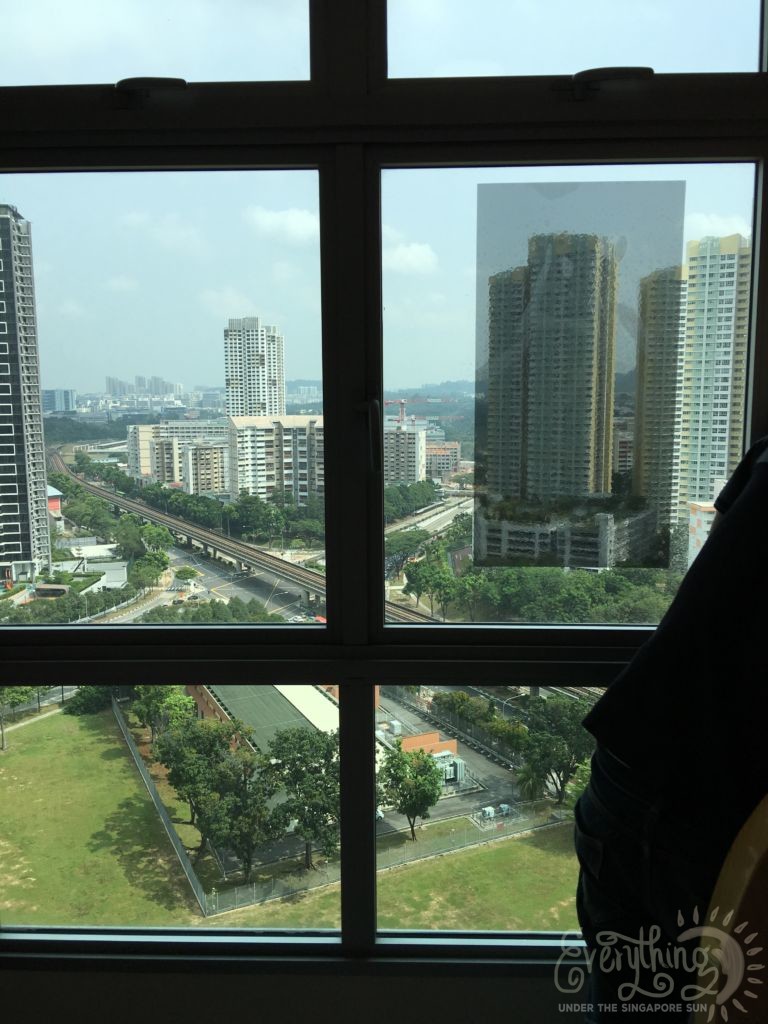
This post will go through all the things I learnt over the few months: Types of solar films, solar rejection percentages and statistics, the final result, and finally a short list of companies that quoted us.
Types of Solar Films
You will hear names like mirror films, metallic, nano ceramic and crystalline but they all fall into 2 main types of heat rejection technology: Reflective and Absorptive. Some are a hybrid of these two.
Reflective Solar Films
Mirror and metallic films are usually reflective films, meaning they reflect the heat away. You can easily tell that these are reflective because they have a mirror effect on one side.
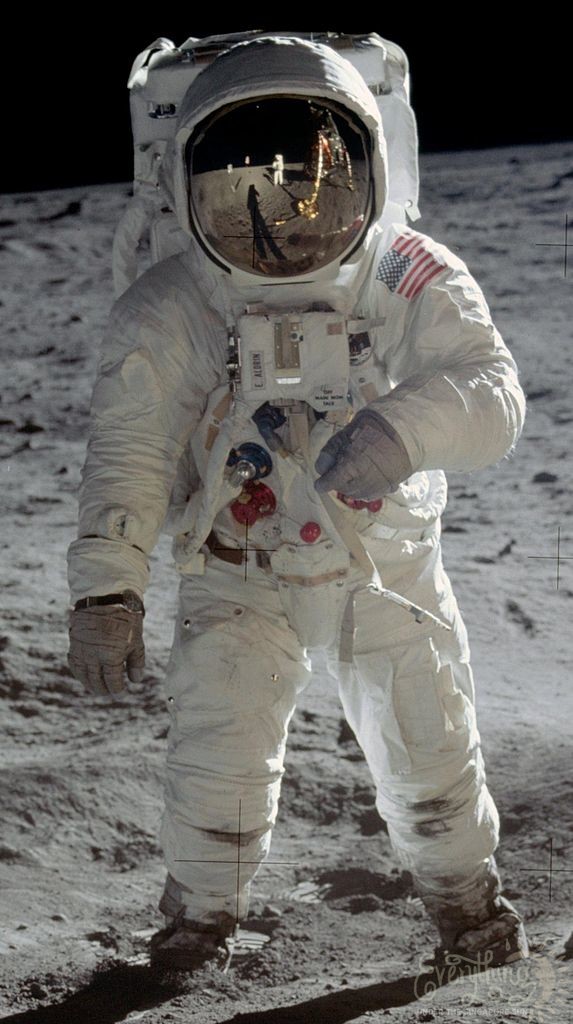
Astronauts use reflective films on their helmets, that’s why they have a mirror-like effect! (Image Source: Wikipedia/Public domain)
Pros: Allow more light into the house as the film is can be less tinted. Because the film is like a mirror, it also acts like a privacy filter, making it hard for people to look into your home.
Cons: Because metal components are integrated in the films, it might affect network signals from getting into your home. Your friends might not get 4G network on their phones inside your house!
Absorptive Solar Films
Absorptive solar films absorb heat and quickly transmits it away. Ceramic and Crystalline films have high tolerance of heat so they are usually integrated into these films.
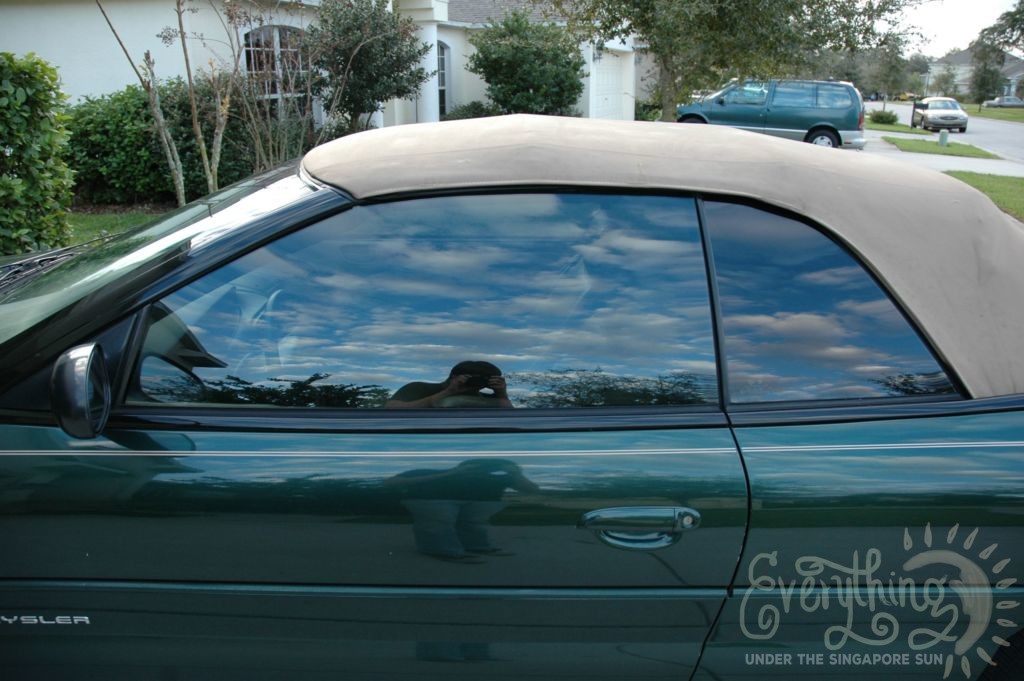
Cars use absorptive films due to restrictive laws about reflective films. (Image Source: Steevven1)
Pros: Less mirrorlike effect, especially at night. This allows you to look out the windows better if outside is darker than inside. High heat absorption so your home is cooler.
Cons: Crystalline is an expensive material, so films using crystals are usually on the high end.
How to Rate Solar Films?
Most companies will bring devices to measure light, heat or invisible waves. It baffles me that each company I invited over for a quote brought different items such as infrared lamp, light meter, thermometer etc. Some only measure light, some measure just the infrared waves and some others claim that Total Solar Rejection (TSR) is the ONLY best form of measurement. Although I find that TSR is probably the best way to go, it also depends on your needs.
1. Are you looking to reduce light or heat or both?
2. Are you concerned about visibility in and out of your window?
Without being too scientific, let me just simply explain the waves that come from the sun that does different things. The sun is made up of three main components: Visible light, Ultra-violet (UV), and Infra-red (IR) and all will cause heat.

Infra-Red (53%): Infrared penetrates your skin and makes you feel hot as it causes a natural cell reaction. The cheapest films on the market are usually just infrared films. They apparently reduce IR waves from coming into your house and building up. Do not trust demonstrations done with infrared lamps though. Lamps usually produce a small range of infrared wavelength but these do not mimic the wide range coming from the sun. These films are amazingly transparent though. If you are just interested in reducing a little heat (about 10%) but not visibility, you can consider this.
Ultra-violet (3%): We all know that UV causes skin cancer but it also bleaches furniture or pictures in your house.
Visible Light (46%): Heat is a very loose term to define the transfer of energy and visible light also causes heat because there is a transfer of energy photons from one place to another. I will try not to bore you with thermodynamics so please read up more if this is your area of interest.
Singapore Companies that offer home window solar films
I literally went to Google “window solar films” and contacted these companies and all of them came down to my house for measurements and a quote. These are their general reviews, I will try not to be negative about them. Hopefully these reviews will save you some time if you do not wish to call and make appointments.
Jestac- 3M Solar Films
Website: jestac.com.sg
Hands down the most expensive solar film you can get and many Singaporean homes still go for it. The brand sells itself so I guess you are paying for it. Don’t get me wrong, 3M is a reputable brand and offers all the TSR specs and 10-year warranty etc. Unfortunately, they are just a little too expensive. Sales guy that came to my house was nice and wasn’t pushy or desperate, probably because the film sells itself.
Lumar Solar Window Films
Website: windowcool.com
Made in USA, and quite popular there as well. Price range is mid to high. The salesman was quite knowledgeable and they provide TSR (total solar rejection) statistics. Llumar is a popular brand in the US for window and car films but relatively known here unfortunately. Warranty is 10 years.
Solarcool
Website: solarcool.com.sg
Solarcool gave me the cheapest quote of all but that is because they offer only IR rejection films. If your home isn’t too hot in the day or afternoon sun facing, they are an affordable solution. Their Eshield films are from USA but relatively unknown. They also offer only a 5 year warranty.
Zenith Films
Website: zenithfilms.com.sg
Zenith films also offer heat rejection and light rejection films but their films are OEM and unbranded. They also didn’t offer any TSR specs. However, because of this, they are marginally cheaper. The sales guy prepared a suitcase full of the “competition” and compared their film’s UV and light rejection against their films but failed to answer some scientific-based questions about TSR and Infra-red waves. They offer a 10 year warranty.
V-Cool iQue Solar Films
Website: v-kool.com.sg/enquiry
V-Cool is also a popular USA brand for window tints on cars. However I only came across them from going though hdb renovation forums as they do very little online marketing. Finally I decided to go with iQue because their films are also made in USA, have a 10-year warranty like many of the above, and pretty good TSR specs. More importantly, they are quite reasonable in pricing. We spent around $800 for our window films, on the living room and all the bedroom windows. The sales guy was the most experienced and oldest and he felt very genuine. Surprisingly, even the installers were professional and polite and they were very punctual.
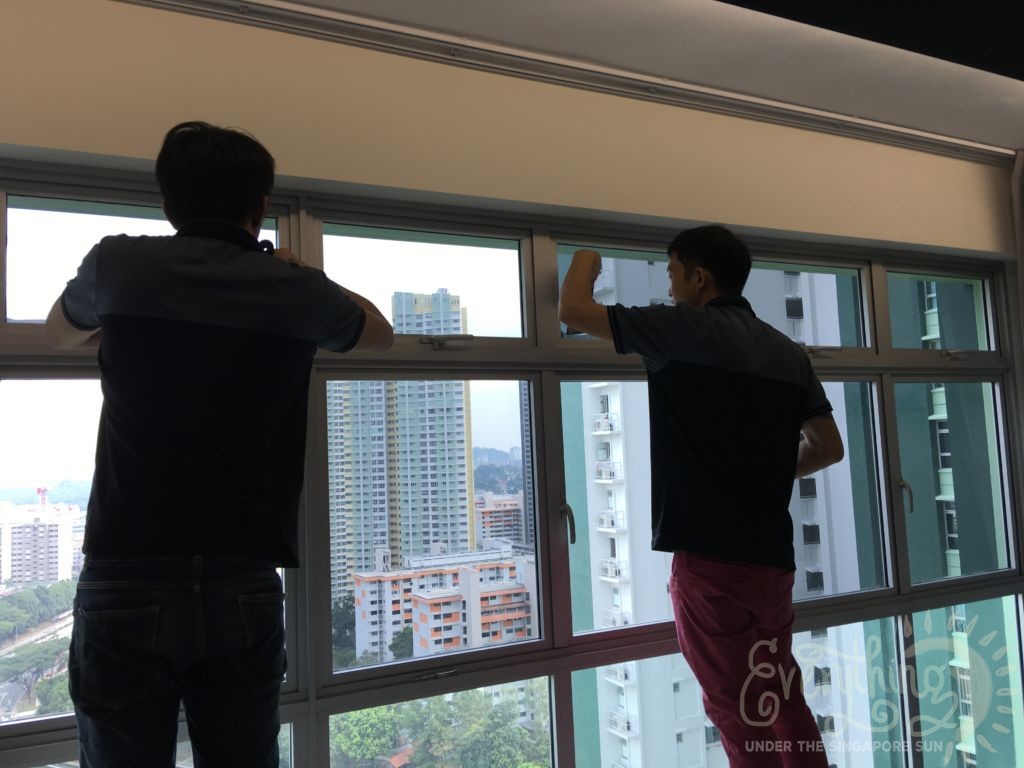
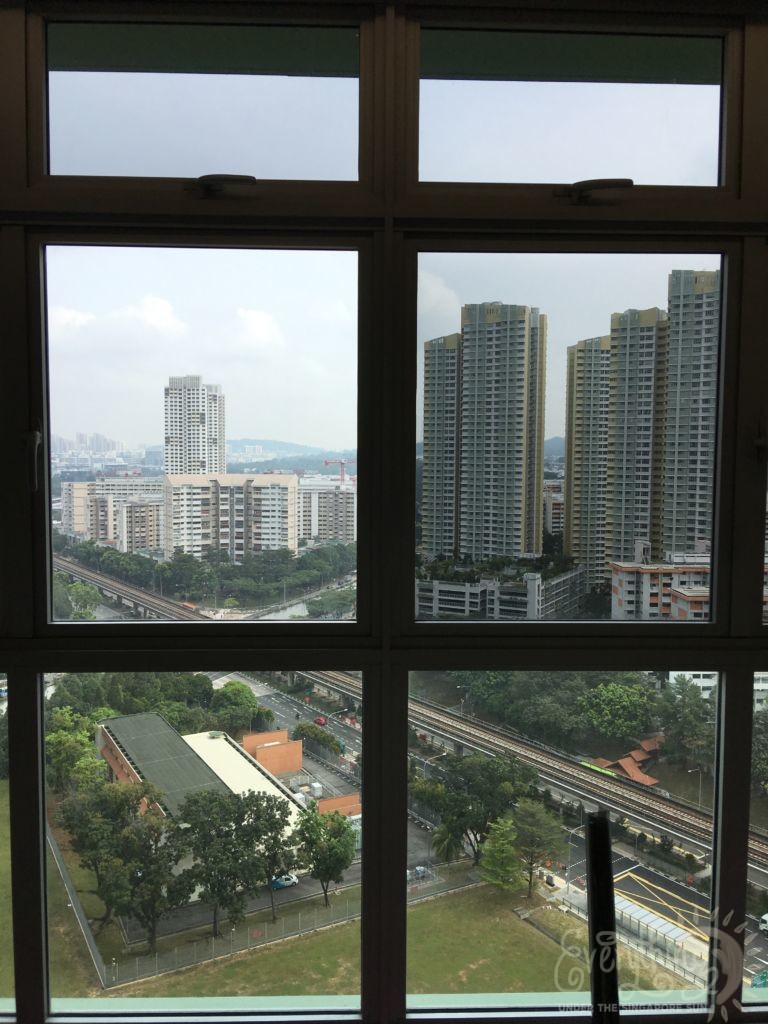
Does it work?
In short, yes! Honestly I had my doubts but the effect was quite substantial and I saw that a couple of degrees difference in temperature from our room thermometer immediately after installation. I also used a light meter app (not as accurate as the real thing but it should work) and it showed a large difference. Also, because the lack of IR and UV penetration and lesser visible light coming in, the house also felt cooler on the skin.
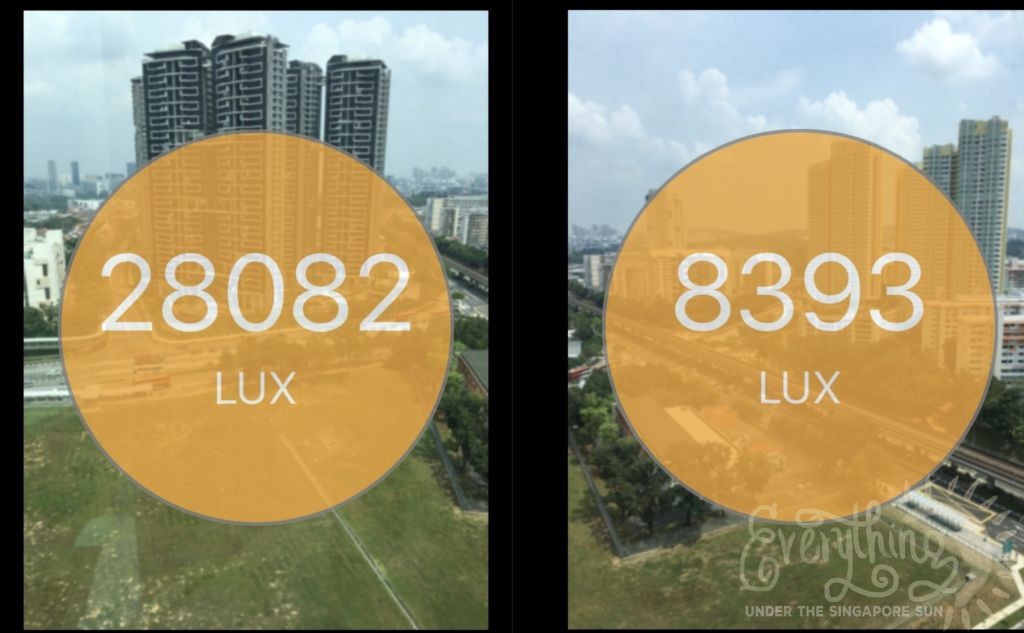
Hope this article helped you in your selection of HDB window solar films! I do still recommend calling and making an appointment with the solar film companies and coming to your own decision.

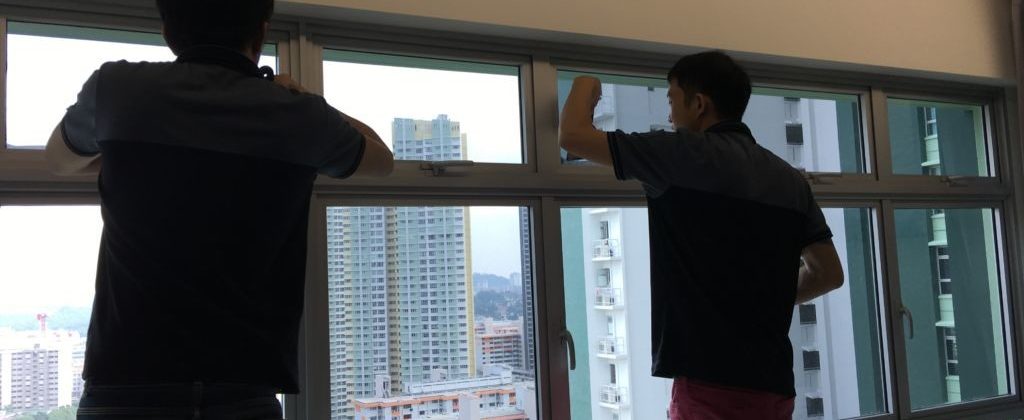


Hi, can I check which model of the window film did you select from v kool? Thanks.
Hi, we went with the 28K film.
Thanks.
Hi, thanks for the informative post. I had a look on their website and it doesn’t seem like the 28K is offered anymore. I had a look through their current products (https://www.v-kool.com.sg/sites/default/files/iQUE%20Performance%20Data_0.pdf) but am a bit confused about which would be best for heat rejection – the brochure does not mention infrared rejection specs, for instance. Grateful for your thoughts on this, thanks!
You can email them or contact them for more information. When I contacted them, I didn’t read their brochure but called them (and all the others) to come to my house for a quotation.
Thanks out of curiosity could I check what the per square foot rate is that you were quoted? They seem very expensive…
It was $4/sq-ft and it was mid-range in terms of cost. (I am not paid to recommend any one of these companies. My purpose of the blog is to post tips and research provided to decide on what kind of solar films is the most suitable for your home as some are cheaper and some are much more expensive.)
Hi – can I check if you meant 28H? Is this a reflective or absorption film? Thanks.
Absorption, not reflective.
Hi. I’m wondering if the guy did share with you that reflective might hv better absorption in heat? I am looking for one right now n this is what the guys said n he told me the other solar film blocks out only 52% of heat but I saw some website that has got almost 90% block out heat?
Hi Sharon, while I don’t claim to be an expert, from my research, reflective and absorptive have its pros and cons. A light wave consists of 3 main components: Visible light, IR and UV. All causes heat. If a manufacturer claims to block out 90%, then perhaps you can check what kind of waves they are blocking out 90% and calculate the TSR (Total Solar Rejection) from there. Almost no legitimate company will claim to block out “heat”, only the specific kind waves. Hope this helps!
May i please have the contact person?
His name is Lai. info.v-kool.sg@eastman.com
Enjoyed studying the content above , really explains all things in detail,the content is extremely intriguing and effective.Thanks for this and best of luck for upcoming articles.
Thank you for your encouraging feedback!
Hi! May I know how much were you quoted for the 3M vs the V-cool? And which model was quoted?
This was a long time ago but I think 3M was around $2000. V-cool was $900 for the 18K model (which they might not offer anymore as products do keep changing). For 3M, it was the mid-range (non-crystalline) version. I believe crystalline was better in terms of heat absorption but more expensive.
Oh okay thanks so much for the information!
I was quoted $16 per sqft for the iQue SS range and I find it very exorbitant. In fact, their quote was 3x more expensive than SolarCool and Zenith.
Correct me if I’m wrong. What I understand is that most, if not all, solar films block 99% UV. Infra Red (heat) and light differ. The darker shades block more light, and most films will block heat (IR) by 80-95% (which should be good enough for morning sun)?
Yes, our film is mid-range in price. However, there are many wavelengths in the sun and some solar films only filter out certain wavelengths. So the way it looks (darkness or reflectiveness) isn’t the only way to gauge. Some things can’t be seen by the eyes and I still feel TSR that is scientifically tested is the best way to determine the best film. My post is not sponsored by anyone so this is all my honest opinions only. Feel free to go with which film that suits your budget best and I would love to hear your experiences with it as well.
Hi! May I know the model and price you were quoted for the 3M and the v-Cool brand please?
I learnt a lot from the above information thanks for that information..
Hi this is a great article and i enjoyed reading it.
I am from a solar film company too and i have to say you have done your research and tried your best to explain all the technical terms.
Just hope to have some inputs so that more information is shared. There is another type of film called Spectrally Selective Sputtered Films (with pure silver inside). These type of films reject and reflect the most amount of heat away while maintaining a clear view (not mirror like looking). BCA also have a law that windows cannot be too reflective (less than 20%). I see that this type of film was not mentioned inside this post.This type of films contains pure silver inside hence the ability to reflect high amounts of heat.
Films that are ceramic based and heat absorptive are actually not suited for Singapore’s climate where we face high heat whole day and whole year. The build up of heat caused by absorption will result in a secondary heat radiation into the house, hence still making the house hot. This point have always been missed out by everyone. Are films that absorb heat suitable for SEA climate? Most of these films are from US/KOREA etc, where they have 4 seasons hence the need to retain and absorb heat during winter too (and thus use ceramic films).
Most films will also claim to block high TSER but it is not the true performance of the film, as they do not take into account whether it reflects or absorb heat. Another technical term consumers must look at is Shading Coefficient, in fact this is the term looked by professionals/architects when determining the heat rejection of films/glass. Also specifications are often misleading and measured by “their own way”. To be honest and truthful, spec reports should be provided. And demo of films should be done and tested to show the differences between films.
I can go on and on about films as i have been in this industry selling films for years, i have seen almost all types of films. And i noticed not many dealers/sellers know about the technical and scientific part about films, this always resulted in false claims on the true performance of the films.
Anyway, thank you for sharing more about solar films. 🙂
Thank you! It is always good to learn more and I appreciate your input. What company sells this kind of SSSF films?
Currently there are a few brands that have these kind of films (sputtered films). However there are also different grades and types of sputtered films – the differences are in the type of metal used.
Normal sputtered films uses normal metals like aluminium,copper etc. These metals do not have high heat rejection.
The more premium ones uses silver and gold in their sputtered films – which can achieve high levels of heat rejection/reflection.
Initial testing you can use an infrared lamp to test its how much heat it blocks, and how it blocks heat (reflect or absorb). To truly know the performance, certified lab test reports can show the true specifications of these films.
Hi Chris, I read a periodic from 3M which talks about SSSF
1.having high corrosion along its cuttings
2. Have low water vapour diffusion rate and thus interfere with the water based installation to achieve clean look
May I know how does your SSSF address these?
HI Chris and all,
Thank you for the info given and shared.
Thanks for your detailed review. I tried contacting iQue but nobody responded. I assume they may be out of business. I tried Window Cool, which is Llumar film, and the price they quoted was reasonable for just 4 panes of window in my study. They were professional and it was fast. Thanks for doing the homework for us!
The 3M ones seems to scratch easily when I dropped by to take a look at the samples. Not sure if the other films are more scratch resistant?